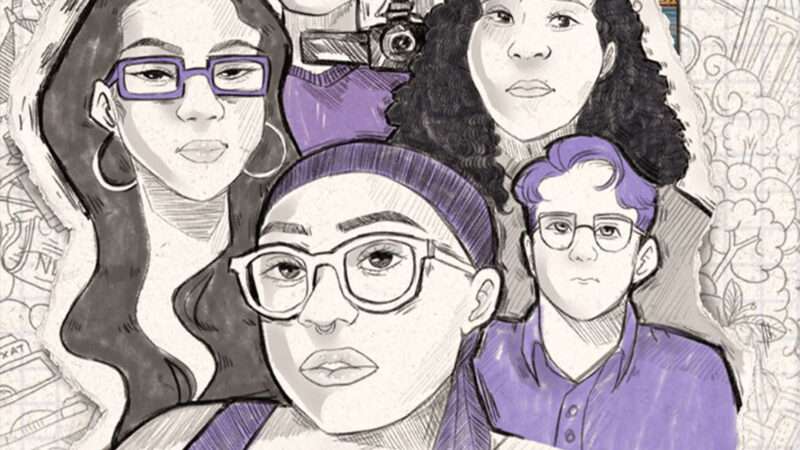On Thursday, the Court decided Chrysafis v. Marks. A majority of the Court granted an application for injunctive relief against the enforcement of part of New York’s eviction protections. Justices Breyer, Sotomayor, and Kagan dissented. We cannot be certain the Court split 6-3, as a justice in the majority may have declined to note his or her dissent. In this post, I will try to make sense of this perplexing entry on the shadow docket.
On July 27, landlords filed an emergency application for injunctive relief. They are represented by Randy Michael Mastro of Gibson Dunn’s New York office. Mastro also successfully represented the Roman Catholic of Brooklyn against (almost former-)Governor Cuomo. He has scored two huge COVID-19 victories on the shadow docket.
The writ presented two questions:
1. Whether New York’s eviction moratorium law, which continues to block property owners from pursuing eviction proceedings or otherwise challenging their tenants’ bald claims of COVID-19 “hardship,” and compels them to serve as the government’s mouthpieces in transmitting government-drafted messages, declaration forms, and lists of recommended legal service providers to their tenants, deprives these property owners of their due process rights and violates their First Amendment rights against compelled speech.
2. Whether the courts below erred in concluding that Jacobson v. Massachusetts, 197 U.S. 11 (1905), requires the application of deferential, rational basis review in evaluating constitutional challenges to government action taken in response to a public health emergency, particularly where, as here, New York has declared its “state of emergency” to be over.
But the Court declined to decide these questions. Instead, the Court limited the Plaintiffs to the “only reliefs applicants” sought in their application:
Applicants therefore respectfully request that the Circuit Justice—or the full Court after referral—grant this application to enjoin Part A of CEEFPA, as extended, pending disposition of Applicants’ expedited appeal in the United States Court of Appeals for the Second Circuit and disposition of any petition for a writ of certiorari and, if such writ is granted, until the rendering of this Court’s judgment.
What is Part A of CEEFPA? The Court explains in one sentence:
If a tenant self-certifies financial hardship, Part A of CEEFPA generally precludes a landlord from contesting that certification and denies the landlord a hearing.
The landlords made two primary arguments why Part A is unconstitutional. First, Part A violates the landlords’ procedural due process rights.
CEEFPA deprives Applicants of their procedural due process rights by mandating that a tenant’s mere submission of a hardship declaration establishes a categorical bar to the commencement or continuation of an eviction proceeding until at least August 31, 2021. CEEFPA Part A §§ 4-6, 8; CEEFPA Extension §§ 2-3. Property owners are given no opportunity to rebut tenants’ hardship declarations, for which tenants need only check a box asserting that eviction would result in either a “significant health risk” or a “financial hardship” to the tenants, with the latter category covering several vague and undefined subcategories. Property owners are not given a chance to be heard at a “meaningful time” or in a “meaningful manner,” because they are not given a chance to be heard at all through at least August 31, 2021, with further extensions possibly to follow. And even when CEEFPA eventually expires, a tenant’s unsubstantiated claim of financial hardship creates an indefinite rebuttable presumption of such hardship in any eviction proceedings that are based on failure to pay rent during the pandemic. CEEFPA Part A § 11.
The District Court, of course, relied on Jacobson and upheld the policy.
Second, the landlords argued that Part A violates their free speech rights:
Here, because CEEFPA mandates speech that Applicants would not otherwise make, and compels them to speak a particular message—outside the context of a proposed commercial transaction—strict scrutiny applies. And, because the State cannot possibly establish that CEEFPA’s requirements are narrowly tailored to a compelling government interest, CEEFPA cannot withstand that strict scrutiny
The New York Attorney General (who does not work for the Governor) argued that the equities do not support an injunction. The regime expires “in just a few weeks”–26 days to be precise. I think we can characterize a duration of less than a month as a “few weeks.” But a full month is not a “few weeks.” Here, the AG made an obvious play for Justice Kavanaugh’s vote, who treated a month as a “few weeks” in the Alabama case:
Although some members of this Court expressed doubts about the CDC’s statutory authority to issue such a moratorium, the equities nonetheless weighed against any stay of the moratorium in light of its scheduled expiration “in only a few weeks” and the need for time to ensure “more orderly distribution of the congressionally appropriated rental assistance funds.” (Kavanaugh, J., concurring).
The landlords filed their reply brief on August 5. It took the Court exactly one week to put out a shadow docket order, with a four-page dissent by Justice Breyer. (This brisk pace supports my suspicion that the Alabama petition was held to moot the case). Had the Court waited three more weeks, the case arguably would have been mooted out. At that point, Chief Justice Roberts–keeping with his Roman Catholic Diocese vote–would have opposed an injunction.
The Court’s analysis is exactly one sentence long with two citations:
This scheme violates the Court’s longstanding teaching that ordinarily “no man can be a judge in his own case” consistent with the Due Process Clause. In re Murchison, 349 U. S. 133, 136 (1955); see United States v. James Daniel Good Real Property, 510 U. S. 43, 53 (1993) (due process generally requires a hearing).
What happened here? Here are my completely unfounded theories.
First, the Court did not address either of the applicant’s arguments. The Court did not decide whether the landlords’ procedural due process rights were violated. Nor did the Court decide if their free speech rights were violated. And Jacobson remains undisturbed.
Second, the Court fashioned an argument out of whole cloth that the parties did not raise: the entire “scheme” violates the Due Process of Law because “no man can be a judge in his own case.” Huh? Who is the judge here? No one argues that the hearing judge in the eviction process is biased. Instead the judge, apparently, is the tenant. By indicating that he suffers a financial hardship, the landlord is (almost) automatically denied a hearing. In other words, the tenant gets to judge his own case of whether he suffers a financial hardship. This argument is bizarre. If the landlord cannot rebut the tenant’s claims, then the landlord’s procedural due process rights are violated. But a tenant is not the judge in his own case because he can make a self-certification that yields an automatic continuance.
And I agree with Justice Breyer’s dissent that a small delay in a proceeding is not an “indisputably clear” violation of Due Process:
Respondent argues, how-ever, that the law is best viewed not as a deprivation of the right to challenge a tenant’s hardship claim but as simply delaying the exercise of that right—as of now for less than three weeks until the law expires. After August 31, New York’s eviction proceedings will be conducted exactly as they were before CEEFPA’s enactment. Our precedents do not make it “indisputably clear” that this delay violates the Constitution.
It can take six months to evict someone in New York!
Third, none of the parties cited In re Murchison (1955). This precedent is obscure. And it doesn’t come close to supporting the Court’s rule. Michigan used a strange system where a single judge served as a one-man grand jury, and then presided over a criminal contempt trial for a witness who perjured himself before that one-man grand jury. The same personal literally judged his own case. Justice Black’s majority opinion rejected this scheme:
A fair trial in a fair tribunal is a basic requirement of due process. Fairness of course requires an absence of actual bias in the trial of cases. But our system of law has always endeavored to prevent even the probability of unfairness. To this end no man can be a judge in his own case and no man is permitted to try cases where he has an interest in the outcome. That interest cannot be defined with precision. Circumstances and relationships must be considered.
In Murchison, the concern was about bias. The judge who presided over the grand jury is potentially biased, and not a neutral arbiter to assess the perjury trial. Thus, no man can be a judge in his own cause.
How does this case relate to Section A? There is no allegation of any sort of bias. The landlord merely checked a box on a form. And there was a continuance by operation of law. The problem, if there is one, is that the landlords are denied their rights to rebut the evidence presented against them.
It is painfully obvious here the Court did not want to make an actual decision about constitutional law. Instead, it reached for an ancient Latin maxim, nemo iudex in causa sua, and called it a day. Indeed, the Supreme Court has never cited Murchison for this proposition. The case has only been cited by the Court five times, ever.
Fourth, the Court spent far more time explaining what it was not deciding than what it was deciding:
This order does not enjoin the enforcement of the Tenant Safe Harbor Act (TSHA), which applicants do not challenge. 2020 N. Y. Laws ch. 127, §§1, 2(2)(a). Among other things, TSHA instructs New York courts to entertain a COVID-related hardship defense in eviction proceedings, assessing a tenant’s income prior to COVID, income during COVID, liquid assets, and ability to obtain government assistance. §2(2)(b). If the court finds the tenant “has suffered a financial hardship” during a statutorily-prescribed period, then it “shall [not] issue a warrant of eviction or judgment of pos-session.” §2(1).
In other words, tenants can still fight eviction by demonstrating they have a “financial hardship.” It is not enough to simply check a box on a form. The tenant must provide some evidence of the income, liquid assets, and other benefits. At the margin, some people subject to eviction may not be able to make this showing. But I speculate that most people who would have benefited from Section A would also benefit from the TSHA.
How can we explain this opinion? Why did the Court go out of its way to explain there are so many other ways tenants can postpone evictions? What could possibly explain such sappy virtue signaling? Who feels the need to apologize when he reaches a conservative result? Who rules in favor of the Constitution, but then pulls his punches to avoid doing anything progressives will dislike? Who’s been messing up everything? It’s been Kavanaugh all along.
I suspect Justice Kavanaugh proposed this nonsensical, hyper-technical ruling, based on a precedent no one even remembers, to avoid making any sweeping rulings on procedural due process, Jacobson, and the First Amendment. And this narrow decision appealed to the Chief Justice’s obsession with judicial independence–even when the judge is not a judge, but actually a tenant. Didn’t Roberts’s icon John Marshall say “no man should be a judge in his own case?” Nevermind, Marshall failed to recuse in Marbury, where he personally failed to deliver the commission. In any event, it isn’t clear that Roberts actually joined the opinion. He could have simply declined to note his dissent. But I’m inclined to think Kavanaugh got Roberts’s vote with this proffer. I would have much preferred a 5-4 decision that actually gave guidance to the lower courts. This decision likely will not have any application outside of New York’s unique regime.
I still have one more lingering question. Why didn’t Kavanaugh, once again, sit on the New York application for a few weeks so it moots out on August 31? After all the federal eviction moratorium remains in place. Even if the New York landlords get relief from the state law, the state courts are still barred from hearing eviction cases. Me thinks the Roberts Court is clearing the deck to enjoin the federal eviction moratorium, soon.
Then we have Justice Breyer’s four-page dissent. He cites Chief Justice Roberts’s South Bay concurrence twice.
Under these circumstances, such drastic relief would only be appropriate if “the legal rights at issue [we]re indisputably clear and, even then, sparingly and only in the most critical and exigent circumstances.” South Bay United Pentecostal Church v. Newsom, 590 U. S. ___, ___ (2020) (ROBERTS, C. J., concurring) (slip op., at 2) (internal quotation marks omitted). . . . .
The legislature does not enjoy un-limited discretion in formulating that response, but in this case I would not second-guess politically accountable officials’ determination of how best to “guard and protect” the people of New York. South Bay United Pentecostal Church, 590 U. S., at ___ (ROBERTS, C. J., concurring) (slip op., at 2) (quoting Jacobson v. Massachusetts, 197 U. S. 11, 38 (1905)).
Roberts doesn’t even bother to respond–not even to the Jacobson citation. Thankfully, the super-precedent is no more.
My new article, The Irrepressible Myth of Jacobson v. Massachusetts should be on SSRN and Scholastica by Monday. I am putting the finishing touches on the article now.
from Latest – Reason.com https://ift.tt/2VRcmBj
via IFTTT






